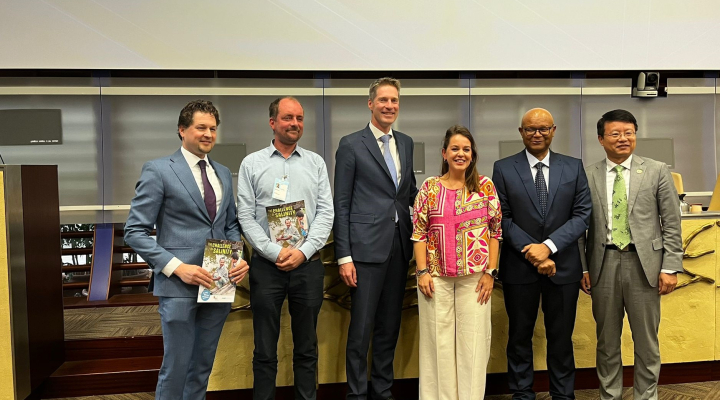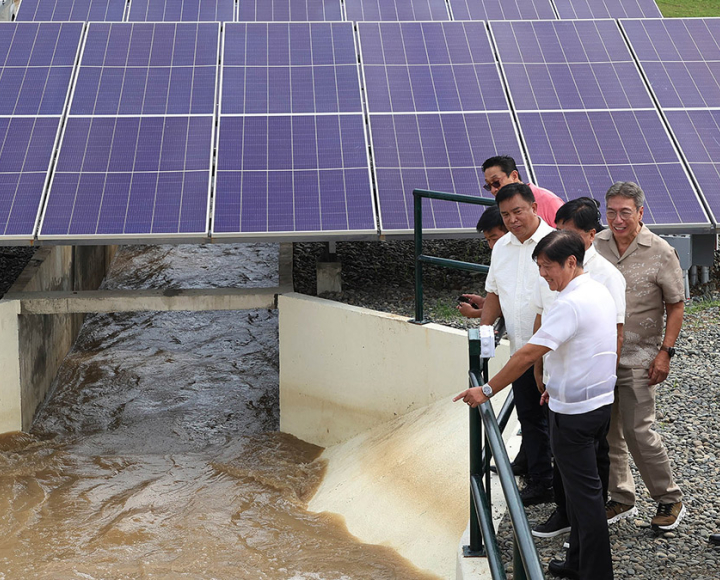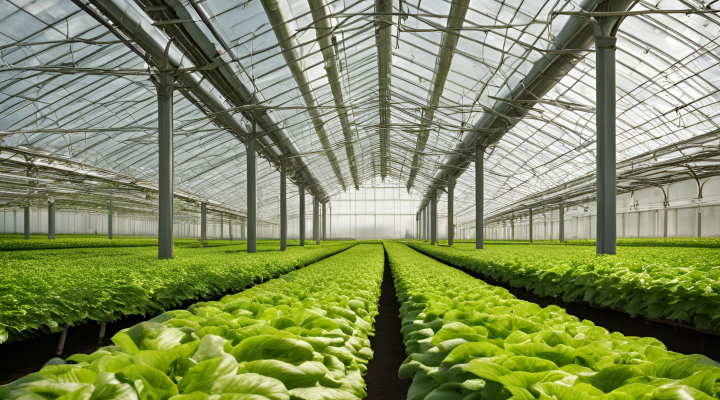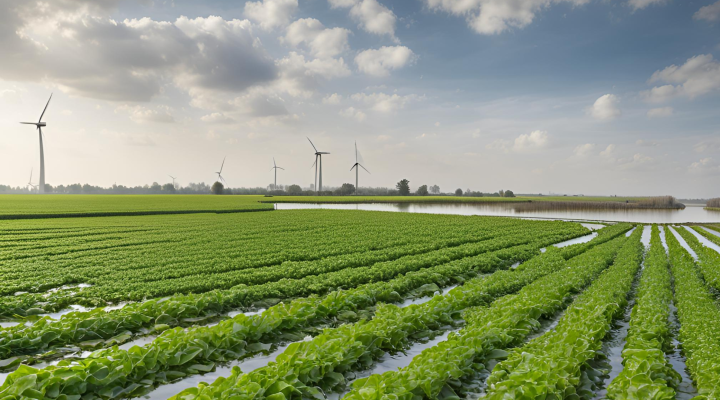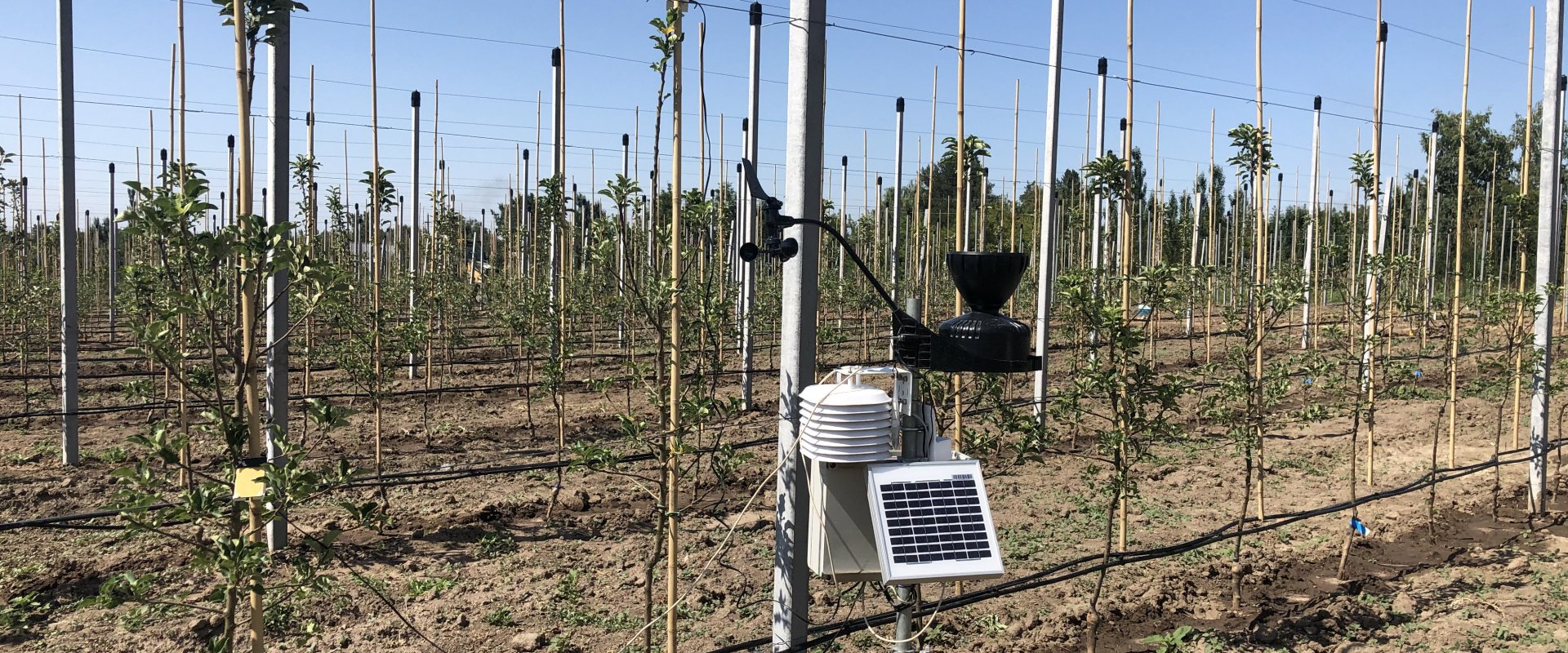
Low water use at fruit orchard in Kazakhstan
On a demo plot, consortium Dutch Fruit Solutions and Kazakh National Agrarian University (KazNAU) have built an orchard to grow fruit with a five to ten time higher yield than normal in Kazakhstan.
The irrigation system has been optimized for a very low water use but still enabling for the fruit to survive the long hot Kazakh summers.
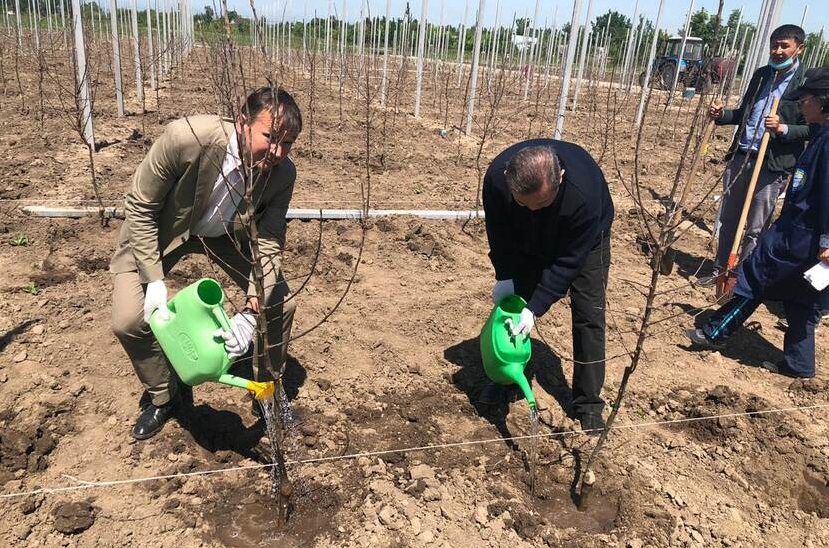

Limited meltwater
The water that is used in the orchard comes from the mountains and flows towards the farming fields via a network of small channels. As water is scarce in Kazakhstan, farmers receive water only once a week.
The Dutch consortium and the university constructed an orchard that can deal with this limited water supply and still keep a high fruit production.
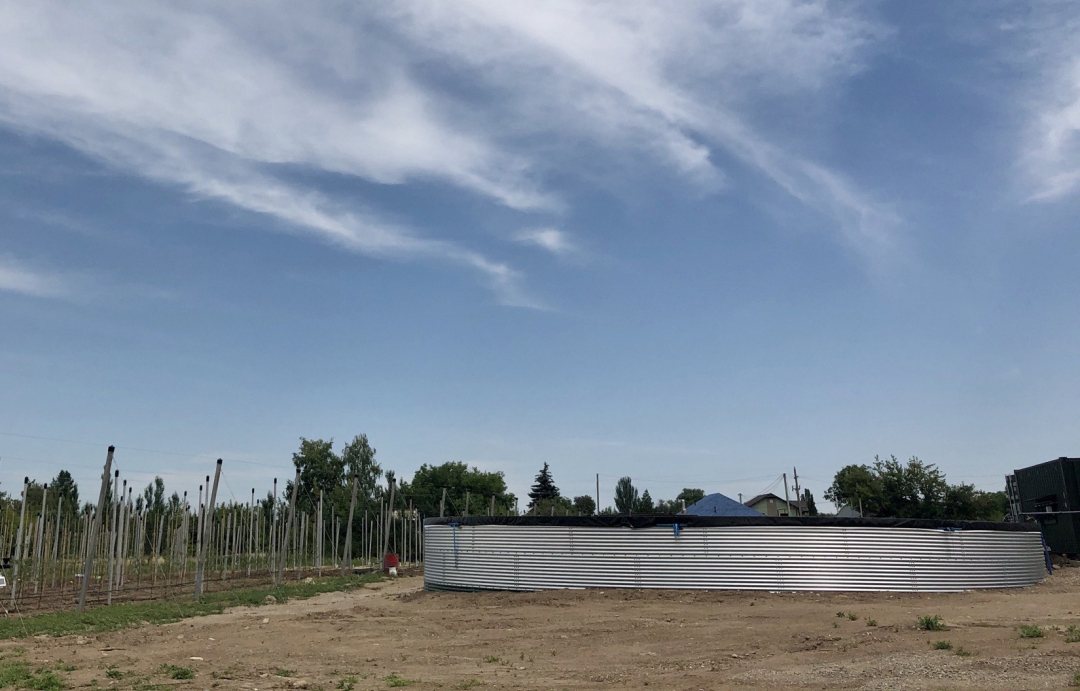

Storage and fertigation
The meltwater from the channels is first stored in a basin to always guarantee the availability of water. Next the water flows in to a container where it is conditioned according to the method of fertigation. As the meltwater is very clean only the pH-level is monitored and, if necessary, corrected.
In the container fertilizers and water-soluble products are added and used for soil amendments and to optimize growth of the fruit. For the various fruits in the orchard, such as cherries, plums, apples, pears, strawberries, red currants, blueberries and even asparagus, the water is conditioned differently.
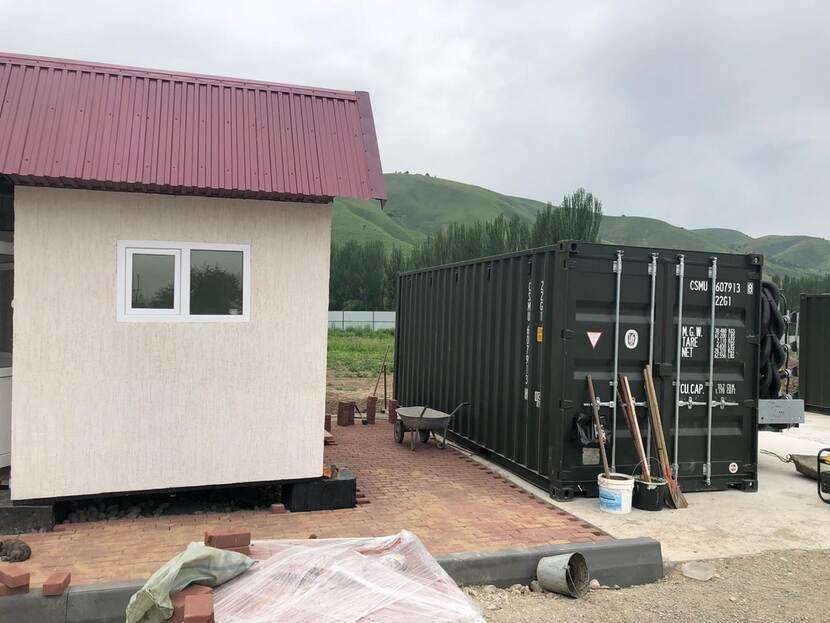

Drip irrigation
The fertilized water reaches the plants through drip irrigation that keeps the soil moisture in the root zone optimized at all times. In effect, 90 percent of the irrigation water will reach the plant.
The orchard is ready for the first summer and for three years the consortium and the university will monitor and optimize the process of fertilisation and irrigation.
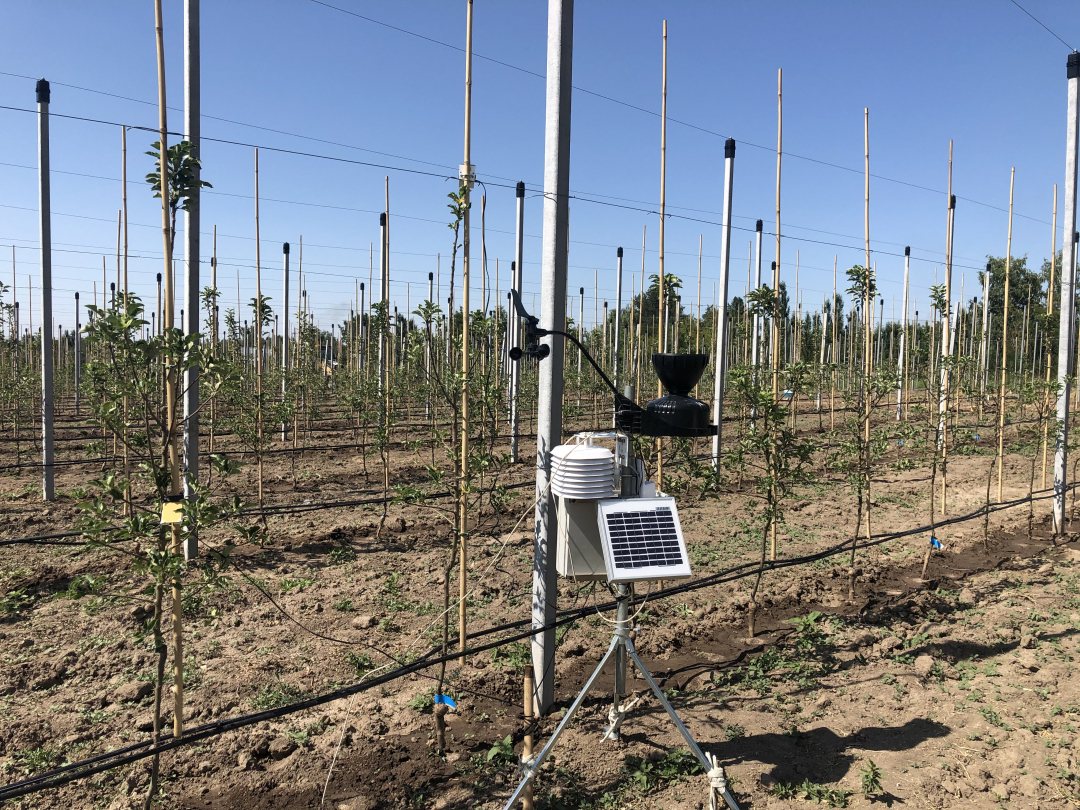

Covid lockdown
Despite the complete Covid-19 lockdown in both the Netherlands and Kazakhstan, the Dutch participants of the project were able to ship the propagation materials, such as young fruit trees and berry plants, equipment and field laboratory from the Netherlands to Kazakhstan without any delays.
At the same time, the Kazakh counterparts prepared the demo plot for planting, had construction works done, installed concrete poles and irrigation system and started with the first planting works.
The project is being implemented under financial support of the Government of the Kingdom of the Netherlands and is represented by the Kazakh National Agrarian University (KazNAU) on the Kazakh side and the consortium Dutch Fruit Solutions with 14 Dutch companies active in the fruit growing sector on the Dutch side.




